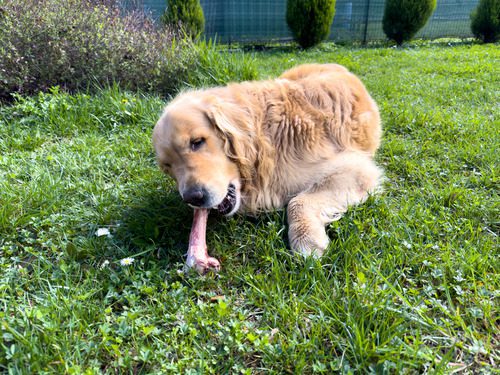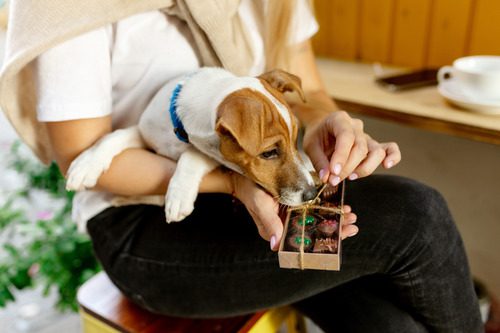What Do Dog Hot Spots Look Like?
Have you ever heard of hot spots in dogs? Do you think your dog might have this common skin problem? Do you want to learn how to tell whether or not the sore on your dog’s body is a hot spot? If any of this sounds like you, you’re not alone. Dog hot spots are a common problem, and some dogs are more prone to this condition than others.

In the article below, you’ll find some basic information about recognizing and identifying hot spots in dogs. You can use this guide to help you determine what could be wrong with your dog and to choose when it may be time to see a vet, too.
What Do Hot Spots Look Like on Dogs?
Hot spots are raw, open wounds that are usually bright red and may sometimes ooze fluids. They may also bleed, especially if your dog has been aggravating them recently. They usually occur quickly over the course of just a few days, and they may worsen just as fast, particularly on dogs who cannot stop licking them.
Hot spots can grow very large in some instances, and they may sometimes cause hair loss as well. They do not cause hair loss across the dog’s body, however, but only on areas directly affected by the presence of the hot spot. They also do not cause hives and do not have dry, flaky skin as a symptom, so you can use these signs to rule out the possibility of hot spots in some dogs, too.
Where are Dog Hot Spots Found?
Dog hot spots are most commonly found on the legs and paws. However, they may also be present on the hips and body of the dog. Rarely, they can occur on the face and neck, but these are much less common locations for hot spots than the other possibilities. It is possible, although unlikely, for dogs to have hot spots pretty much anywhere on their bodies.
Since hot spots are usually associated with licking and moisture, they are not often found on parts of a dog’s body that she cannot reach to lick herself. However, if you have multiple dogs, one dog may sometimes lick the other’s hot spots in hard-to-reach locations and worsen them regardless of where they are found.
What are the Most Common Causes of Hot Spots in Dogs?
Parasites are one of the most common causes of dog hot spots, simply because they cause dogs to lick, chew, and otherwise bother their skin often. Fleas and ticks are the usual culprits here. Food allergies, seasonal allergies, and skin infections can also contribute to the problem of hot spots in dogs.
Moisture trapped against the dog’s skin for a while can lead to the buildup of bacteria, which can find its way into the skin through even the smallest of cuts or scrapes. This is why dogs who obsessively lick or chew their feet or legs are more prone to hot spots than those who do not. Swimming may also lead to more hot spots, too.
What is the Treatment Method for Dog Hot Spots?
Your vet can give you antibiotics to prevent a secondary infection and may give your dog steroids if the problem is severe or if they have many hot spots at once. The vet may also prescribe anti-itch medication.
Additionally, you can use over-the-counter hot spot treatments to clean and disinfect the skin. You will likely need to keep your dog in an E-collar no matter which treatment methods you choose, to prevent them from chewing and licking the hot spot further.
How Can You Prevent Hot Spots on a Dog?
It can be tough to prevent hot spots, but you can do your dog a favor by making sure they stay on a flea and tick preventative every month. This way, they will not risk developing an itch that eventually leads to the production of hot spots. Additionally, make sure you thoroughly dry your dog after swimming or bathing.
If your dog licks or chews out of boredom, give him or her some toys that are safe for them to play with even when no one is around. Try a Kong toy stuffed with peanut butter or treats to distract them from their chewing behavior.
Go to the Vet to Get Help with Dog Hot Spots
With the help of this information, you should be able to better understand what’s going on with your dog’s skin condition. If your dog’s skin problem resembles the description of a hot spot listed here, then it may be time to try an over-the-counter treatment or take him or her to the vet for a more in-depth treatment instead.
Your vet can give you specific information about your dog’s individual situation, and may also prescribe something stronger than over-the-counter hot spot medication. Always follow your vet’s guidance when dealing with hot spots in your dog.
If you’re wanting to schedule an appointment for your pet for dog hot spots, contact Heart + Paw today. Our veterinarians will work with you on finding the best treatment option for your pet to help clear up this condition as quickly as possible. You can make an appointment with our team and any one of our locations by booking an appointment online or calling us directly.
Recent Posts
Can Dogs Eat Ham?
Ham is a popular meat found on many dinner tables, especially during the holidays. As a dog…
8 Signs and Symptoms of Diabetes in Dogs
Caring for a dog means being tuned in to the subtle changes that can reveal their overall…
Why Dogs Can’t Eat Chocolate and Tips for Keeping This Sweet Treat Out of Their Reach
Chocolate is a beloved indulgence for us, but for our dogs, it’s a hidden danger that can…
Why Cat Teeth Cleaning is Important For Your Pet’s Health
As a cat owner, you know how important it is to care for your feline friend’s overall…
Cat Body Language: A Guide To Understand What Your Cat is Telling You
Imagine trying to communicate without words, relying solely on subtle gestures, glances, and movements. This is how…
About Us
Heart + Paw was founded in 2018 by Chief Veterinary Officer Dr. George Melillo, who currently serves the Mid-Atlantic area. Heart + Paw offers a combination of veterinary care, pet grooming, and dog daycare to help be a resource in your pet parenthood journey.
We'd Love to Meet Your Four-Legged Friends
Find out how the friendly veterinary team at your local Heart + Paw can help your pets live longer, healthier lives by searching for a location near you.





